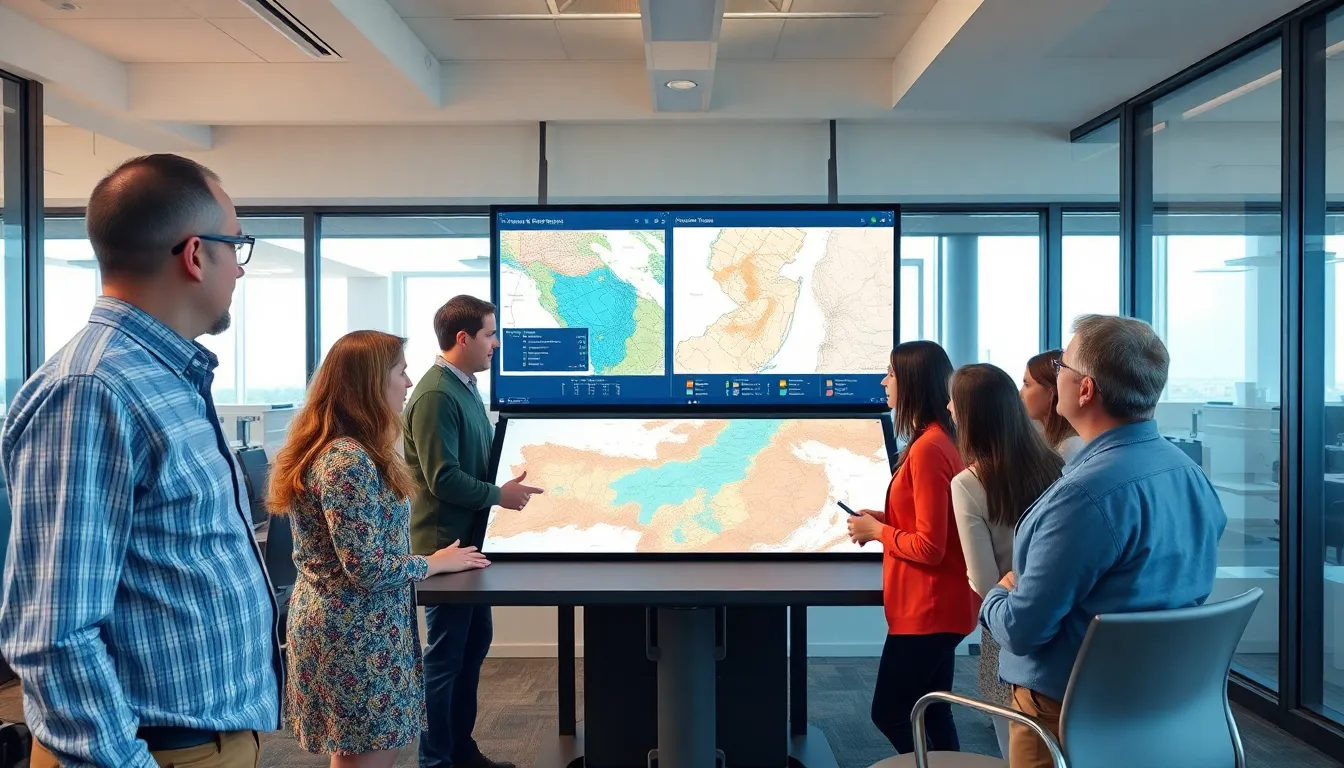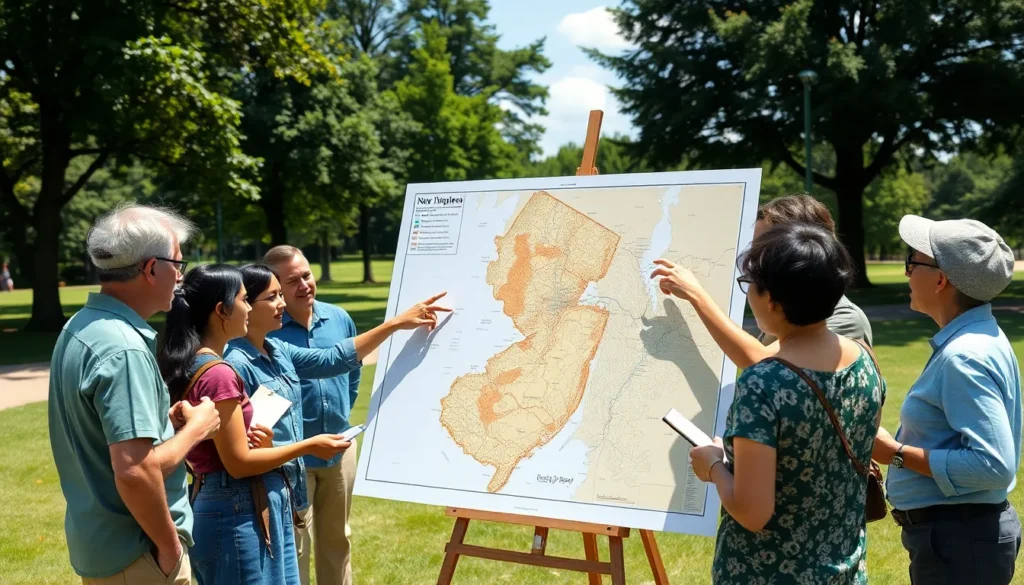The annual report from the New Jersey Bureau of Geology and Survey (NJBGS) serves as a vital resource for understanding the state’s geological landscape. It highlights key findings and trends that impact everything from natural resource management to environmental protection. With its comprehensive data and insightful analysis, this report is essential for policymakers, researchers, and anyone interested in New Jersey’s geological framework.
By examining the NJBGS annual report, readers can gain valuable insights into the state’s geological surveys, mapping initiatives, and educational outreach. This document not only reflects the bureau’s commitment to transparency but also showcases its role in fostering a deeper understanding of New Jersey’s natural resources. Engaging with this report opens the door to informed discussions about sustainability, land use, and conservation efforts across the state.
Table of Contents
ToggleOverview of the www.nj.gov/njbgs Annual Report
The annual report from the New Jersey Bureau of Geology and Survey (NJBGS) serves as a detailed examination of the state’s geological landscape. It plays a critical role in informing various stakeholders about geological surveys and resource management.
Purpose and Importance
The NJBGS annual report aims to provide comprehensive insights into New Jersey’s geological conditions. This documentation assists policymakers, researchers, and the public in making informed decisions regarding land use, resource allocation, and environmental protections. The report underscores the bureau’s dedication to transparency, supporting effective management of natural resources while promoting public awareness of geological issues.
Key Highlights
- Geological Surveys: The report outlines findings from recent geological surveys, detailing mineral resources and significant geological formations across the state.
- Mapping Initiatives: It presents updated geological maps that enhance understanding of subsurface conditions and aid in planning for infrastructure projects.
- Educational Outreach: The bureau’s initiatives to educate the public on geology and earth sciences are highlighted, showcasing successful workshops and community events.
- Environmental Trends: The report discusses emerging environmental trends, such as climate change impacts on geological stability and water resources, providing crucial data for future planning.
- Resource Management: Recommendations for sustainable management practices regarding New Jersey’s natural resources are emphasized, supporting conservation efforts throughout the state.
Financial Performance

The financial performance of the New Jersey Bureau of Geology and Survey (NJBGS) reflects its operational efficiency and ability to fulfill its mission. The annual report details revenue sources and expenditures, providing a clear view of the bureau’s financial health.
Revenue Sources
NJBGS obtains funding from multiple revenue sources, primarily focusing on state allocations, grants, and service fees. Key revenue components include:
- State Budget: The largest portion of funding, allocated through the state’s annual budget.
- Federal Grants: Funding received from federal agencies for specific geological projects.
- Service Fees: Fees charged for educational programs, publications, and geological analyses.
These diverse revenue streams ensure NJBGS maintains steady financial support for its activities and initiatives, promoting sustainable management of geological resources.
Expenditures
The expenditures of NJBGS reflect its strategic priorities and operational requirements. Major expenditure categories include:
- Personnel Costs: Salaries and benefits for the bureau’s staff, which comprise geologists, educators, and administrative personnel.
- Research and Development: Investments in geological research, data collection, and survey activities to support ongoing projects and enhance resources.
- Educational Outreach: Funding allocated to public education initiatives, including workshops, seminars, and educational materials.
These targeted expenditures enable NJBGS to effectively manage its resources while advancing geological research and education in New Jersey.
Program Achievements
The New Jersey Bureau of Geology and Survey (NJBGS) has achieved significant milestones that demonstrate its impact on the community and commitment to geological research.
Impact on Community
NJBGS enhances community awareness and engagement through educational programs and public outreach. The bureau organizes workshops and seminars, reaching over 1,000 residents each year. Partnerships with local schools facilitate geology-based curricula, impacting over 5,000 students annually. Community events raise awareness about responsible land use and environmental stewardship, fostering a culture of conservation throughout New Jersey.
Notable Projects
NJBGS undertakes several projects that advance geological understanding and support resource management. The “Geological Mapping Initiative” involves detailed mapping of New Jersey’s surface and subsurface geology, enhancing resource management capabilities. The “Groundwater Quality Monitoring Program” assesses nearly 300 groundwater sites, ensuring clean water resources for communities. The “Educational Outreach Project” develops engaging materials and training for teachers, benefiting more than 200 educators statewide. Each project reflects the bureau’s commitment to informed decision-making and sustainable practices.
Strategic Goals and Objectives
The New Jersey Bureau of Geology and Survey (NJBGS) sets clear goals to enhance geological knowledge and resource management in the state. These goals guide their initiatives and ensure effective utilization of natural resources for current and future generations.
Short-Term Goals
- Enhance Data Collection: Increase the frequency and accuracy of geological data collection through advanced surveying techniques. Regular updates ensure stakeholders access the most current information.
- Foster Partnerships: Establish collaborations with local universities and research institutions to broaden geological research efforts. These partnerships enhance educational opportunities and leverage shared resources for comprehensive studies.
- Expand Educational Outreach: Implement targeted outreach programs to engage over 1,500 residents and students annually. The aim is to raise awareness about geological resources and environmental sustainability.
Long-Term Vision
- Promote Sustainable Resource Management: Develop guidelines to ensure sustainable exploitation of New Jersey’s natural resources. This vision encompasses ongoing assessments of both renewable and non-renewable resources.
- Support Policy Development: Provide crucial data and analytical reports to support environmentally informed policymaking. The objective is to create a balanced approach to resource utilization and ecological preservation.
- Innovate Geological Mapping: Advance geological mapping initiatives using cutting-edge technology to produce high-resolution maps. These maps enhance land-use planning and facilitate informed decision-making for all stakeholders.
- Strengthen Community Engagement: Continue building strong relationships with local communities to foster a culture of environmental stewardship. Long-term plans involve increasing participation in geological studies and sustainability practices.
Challenges and Areas for Improvement
The NJBGS annual report identifies several challenges impacting geological research and resource management in New Jersey. Addressing these issues encourages ongoing improvement in both efficiency and effectiveness.
Identified Issues
- Data Gaps: Incomplete geological data limits decision-making capabilities for policymakers and researchers, affecting land use and environmental assessments.
- Funding Constraints: Reliance on fluctuating state allocations and federal grants creates uncertainty in long-term project planning and execution.
- Public Engagement: Insufficient outreach efforts reduce community involvement in geological initiatives, resulting in a less informed public regarding environmental issues.
- Technological Limitations: Outdated surveying tools hinder the accuracy and comprehensiveness of geological mapping and data collection efforts.
Proposed Solutions
- Enhancing Data Collection: Implement innovative surveying technologies and methodologies to fill data gaps and improve the accuracy of geological information.
- Diversifying Funding Sources: Pursue additional funding avenues, such as private partnerships and sponsorship programs, to mitigate reliance on state and federal allocations.
- Strengthening Outreach Programs: Increase educational initiatives that actively engage communities and promote awareness of the bureau’s efforts, thereby fostering stronger public support.
- Investing in Technology: Allocate resources toward acquiring modern surveying equipment and software to enhance data quality and streamline analysis processes.
The annual report from the New Jersey Bureau of Geology and Survey stands as a vital tool for understanding the state’s geological landscape. It not only highlights critical findings and trends but also emphasizes the bureau’s commitment to transparency and community engagement. Through initiatives like educational outreach and innovative mapping projects, NJBGS fosters informed discussions around sustainability and resource management.
As New Jersey faces various challenges in geological research and resource management, the bureau’s strategic goals offer a roadmap for addressing these issues. By enhancing data collection and strengthening community partnerships, NJBGS is poised to make a lasting impact on both policy development and public awareness. Engaging with the annual report is essential for anyone interested in the future of New Jersey’s natural resources.





